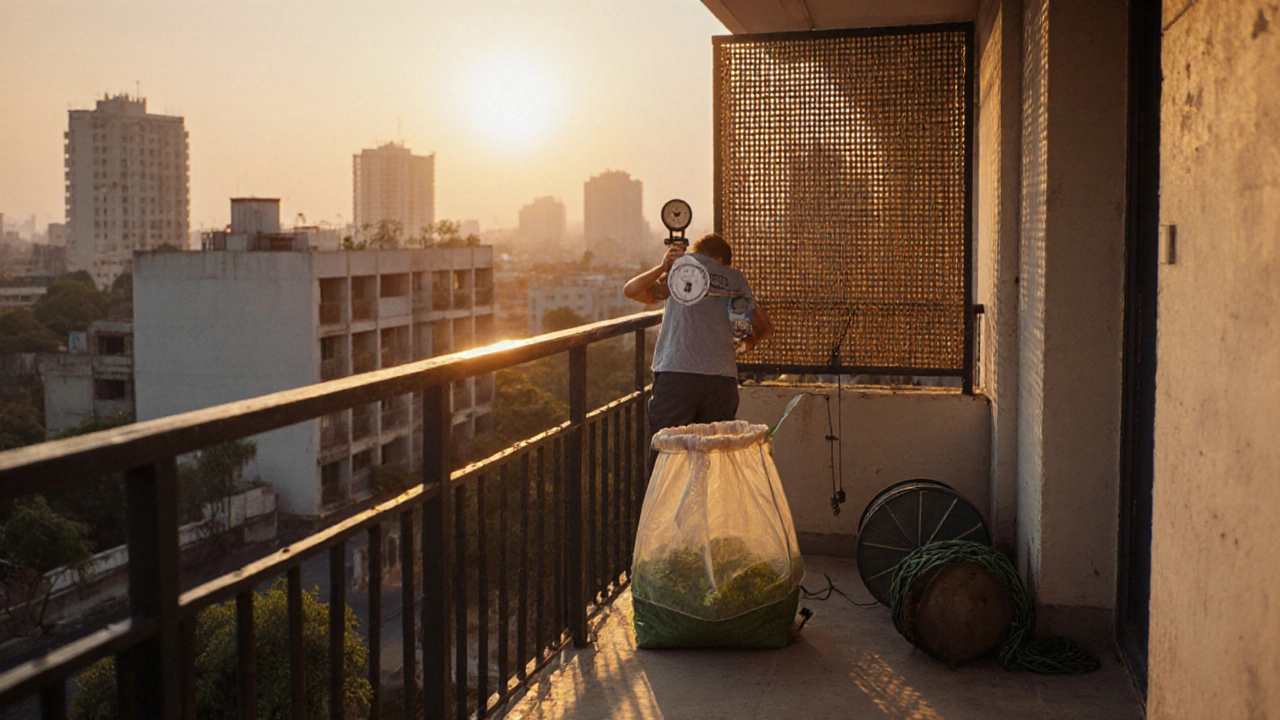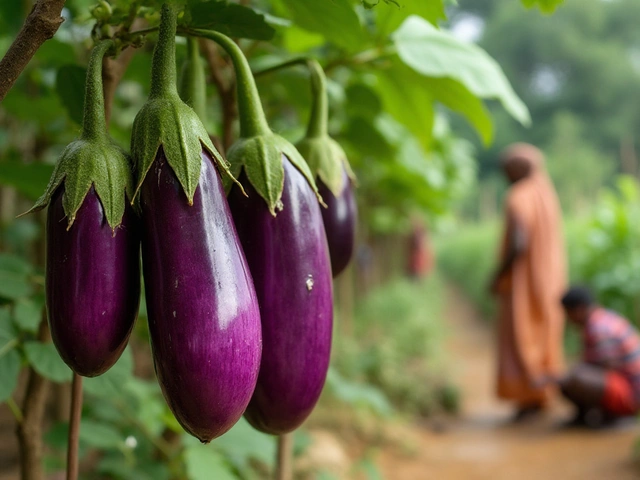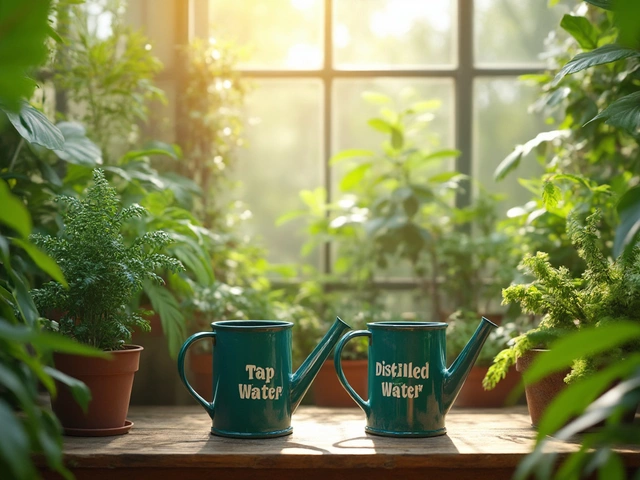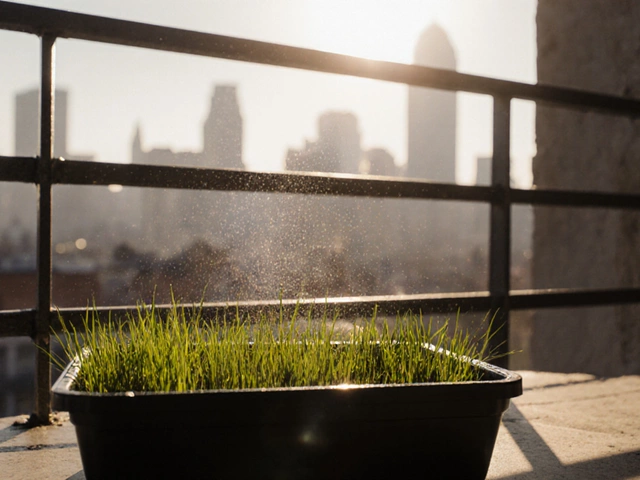Quick Takeaways
- Assess sunlight, weight limits, and wind exposure before buying anything.
- Choose lightweight containers with good drainage and a balanced soil mix.
- Start with fast‑growing, shallow‑rooted veggies like lettuce, radishes, and herbs.
- Water consistently, use a slow‑release fertilizer, and watch for pests early.
- Use vertical supports or stackable trays to maximize limited space.
Ever stared at your balcony and wondered if you could actually harvest a salad from it? Balcony vegetable gardening is the practice of growing edible plants in containers on a balcony or small outdoor platform. It’s not a gimmick; with the right planning you can produce enough greens, tomatoes, and beans to supplement your kitchen meals. The trick is to treat the balcony like a tiny farm: know your climate, use the proper containers, and give plants what they need in a cramped space.
1. Check the Basics - Sunlight, Load Capacity, and Wind
Before you buy a pot, walk around your balcony at three different times - early morning, midday, and late afternoon. Sunlight is the primary energy source for photosynthesis and determines which vegetables will thrive. Most fruiting veggies (tomatoes, peppers, beans) need at least 6 hours of direct sun. Leafy greens can cope with 4‑5 hours. If your balcony is shaded on the west side, place sun‑loving crops in the east‑facing slots where they catch the morning light.
Next, confirm the balcony’s weight limit. A 20‑liter pot filled with soil can weigh 30‑40 kg. If the structure can only hold 200 kg total, you’ll need to limit the number of large containers or use lighter substrate alternatives.
Wind is another silent killer. Strong gusts can snap a delicate tomato plant or dry out soil in minutes. Install a simple windbreak - a bamboo screen, lattice, or even a garden trellis with a sheer fabric.
2. Pick the Right Containers that hold soil, water, and plants while fitting balcony constraints
When space is limited, every centimetre counts. Opt for lightweight, durable pots made of fabric (grow bags), resin, or high‑density polyethylene. Avoid heavy terra‑cotta unless you’re sure the balcony can handle it.
Key features to look for:
- Drainage holes - prevents waterlogging, a common cause of root rot.
- Self‑watering reservoirs - ideal for busy owners; they release moisture as the soil dries.
- Stackable or tiered designs - turn vertical space into horizontal planting area.
Measure the interior dimensions of your balcony railing or balcony edge. Many balcony‑specific kits come with a railing‑mount bracket that lets you hang 10‑liter pots on the side, freeing floor space for larger plants.
3. Build a Balanced Soil mix that provides nutrients, drainage, and water retention for container vegetables
Garden soil is too dense for containers. A good mix is 40 % high‑quality potting compost, 30 % coconut coir or peat moss for moisture retention, and 30 % perlite or coarse sand for aeration. Add a handful of well‑rotten compost or worm castings for extra nutrients.
If you live in Auckland’s mild, rainy climate, you may want to reduce the water‑retaining component slightly to avoid soggy roots. A simple test: squeeze a handful of wet mix - it should crumble, not form a solid ball.
Before planting, water the mix until it’s uniformly moist. This settles the media and eliminates air pockets that can dry out seedling roots.
4. Choose Crops That Suit Your Balcony
Not every vegetable is balcony‑friendly. Here’s a quick cheat‑sheet:
- Leafy greens - lettuce, spinach, arugula, bok choy. Harvest within 30‑45 days.
- Herbs - basil, parsley, cilantro, chives. They love sunny spots and can be clipped repeatedly.
- Root veg - radishes, baby carrots, beets. Use deep, narrow containers (15‑20 cm deep).
- Fruit‑bearing veg - cherry tomatoes, dwarf peppers, bush beans. Need cages or trellises.
When planning, consider the growing season of the Southern Hemisphere. In Auckland, the best planting window for cool‑season crops (lettuce, kale) is March‑May, while warm‑season veggies (tomatoes, capsicum) thrive from October‑December.
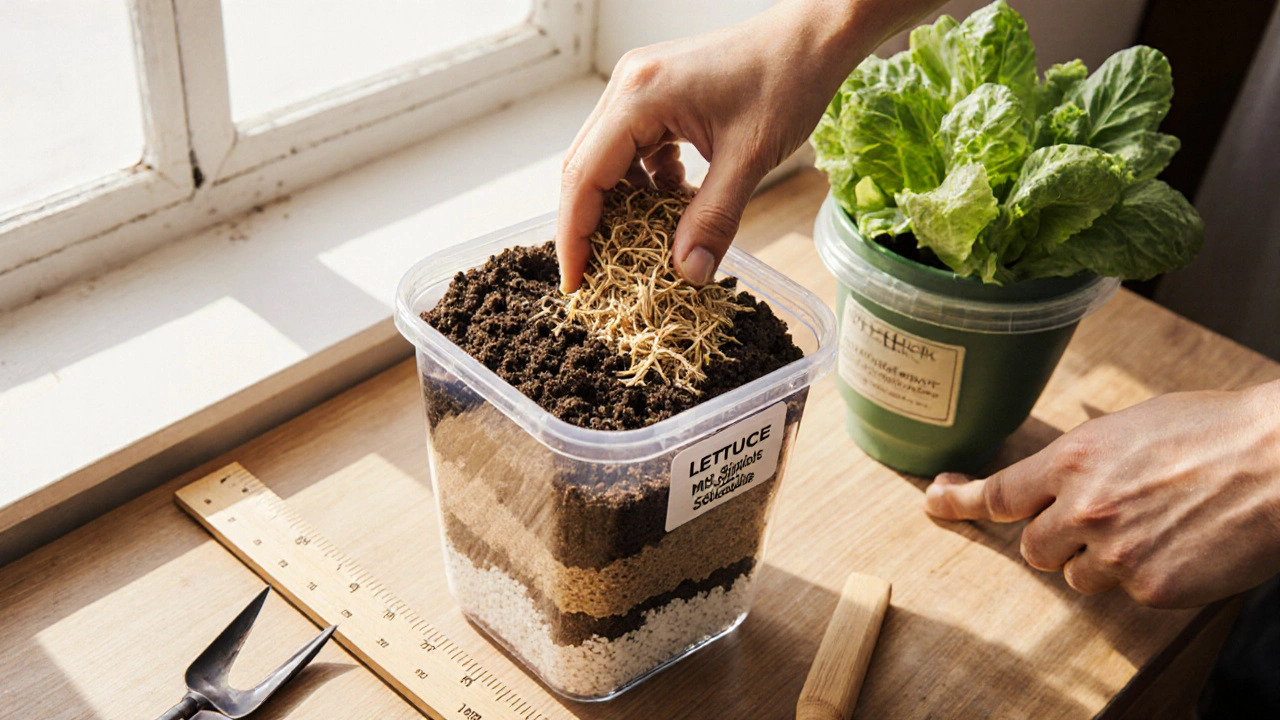
5. Step‑by‑Step Balcony Vegetable Garden Setup
- Mark the exact spots for each container, taking into account sun exposure.
- Place a protective sheet or old newspaper on the balcony floor to catch drips.
- Fill containers with the prepared soil mix, leaving 2‑3 cm from the rim.
- Sow seeds or transplant seedlings according to package depth instructions.
- Water gently until moisture reaches the bottom of the pot.
- Insert supports - tomato cages, bamboo stakes, or a vertical trellis for beans.
- Apply a balanced, slow‑release fertilizer (10‑10‑10) at planting time.
- Label each pot with the plant name and sowing date.
6. Watering techniques that keep container soil moist without overwatering
Containers dry out faster than in‑ground beds, especially on windy balconies. Check soil moisture daily by sticking a finger 2 cm deep; if it feels dry, water until you see runoff from the drainage holes.
For consistency, set up a drip irrigation reel or a DIY self‑watering system using a 5‑liter bottle with a small hole punched in the cap. Place the bottle upside‑down in the soil; it releases water slowly, mimicking natural rain.
Mulch the surface with straw, shredded bark, or coconut chips. Mulch reduces evaporation, keeps soil temperature stable, and blocks weed seeds.
7. Feeding - Fertilizer provides essential nutrients for healthy vegetable growth
Because containers hold limited nutrients, a feeding schedule is crucial. Use a liquid sea‑weed or fish‑emulsion fertilizer every two weeks for leafy greens. Fruit‑bearing plants benefit from a higher‑phosphorus feed (e.g., 5‑10‑5) once they start flowering.
Organic options like compost tea, worm castings, or a thin layer of blood meal work well and avoid chemical buildup that can harm beneficial microbes.
8. Managing Pests and Diseases - Pest control methods to keep insects and diseases from ruining balcony crops
Common balcony foes include aphids, whiteflies, and spider mites. A quick spray of water can dislodge soft‑bodied pests. For tougher infestations, use neem oil or a homemade garlic‑pepper spray (1 tsp garlic, 1 tsp hot pepper, 1 L water).
Good airflow is the best disease prevention. Space containers at least 15 cm apart and prune crowded foliage. If you notice any leaf spots, remove affected leaves immediately and apply a copper‑based fungicide.
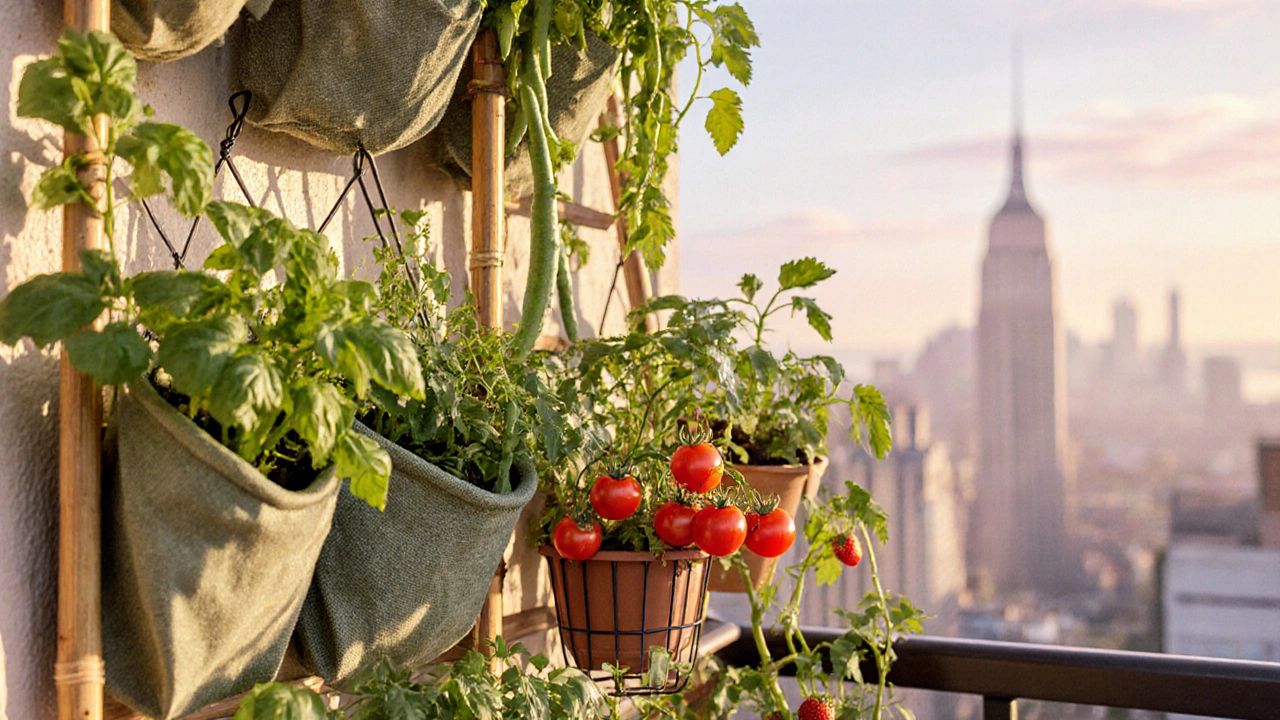
9. Going Vertical - Vertical gardening techniques that use walls, railings, and trellises to increase planting area
Vertical space is a balcony’s secret weapon. Install a pocket‑planter system (fabric sleeves that attach to a railing) for herbs and lettuce. Hanging baskets work well for strawberries or dwarf eggplants.
For climbing beans or peas, erect a simple trellis using bamboo stakes and garden twine. Tomatoes love cages; a compact tomato cage can hold a dwarf variety in a 12‑liter pot.
10. Seasonal Rotation and Harvest Timing
Rotate crops each season to keep soil nutrients balanced and reduce pest build‑up. After a fast‑growing lettuce crop, plant a shallow‑rooted beet or radish in the same pot.
Harvest at the right time: cut lettuce leaves when they’re about 10 cm tall for a ‘cut‑and‑come‑again’ harvest, pick cherry tomatoes when they turn fully red, and snip beans before pods get too heavy.
Checklist for Balcony Garden Success
- ☑ Verify balcony load capacity and wind exposure.
- ☑ Measure daily sunlight hours for each planting zone.
- ☑ Choose lightweight containers with drainage.
- ☑ Prepare a well‑balanced soil mix (compost + coir + perlite).
- ☑ Select appropriate crops for season and space.
- ☑ Install supports, trellises, or hanging pockets.
- ☑ Set up a consistent watering routine (drip or self‑watering).
- ☑ Apply slow‑release fertilizer at planting, then feed every 2‑3 weeks.
- ☑ Monitor for pests; use neem or garlic spray as needed.
- ☑ Rotate crops each harvest cycle.
Mini FAQ
How much sunlight does a balcony need for tomatoes?
Tomatoes need at least 6 hours of direct sun each day. If your balcony only gets 4‑5 hours, choose dwarf varieties like ‘Patio’ and use reflective mulches to boost light.
Can I use regular garden soil in balcony pots?
No. Garden soil is too heavy and often lacks proper drainage. Use a lightweight potting mix blended with perlite or sand to keep roots healthy.
What’s the best way to water a balcony garden during a dry spell?
Set up a drip‑irrigation reel or use self‑watering bottles. Water early in the morning to reduce evaporation, and mulch the soil surface.
Which vegetables grow best in Auckland’s mild climate?
Cool‑season crops like lettuce, spinach, kale, and carrots thrive from March to May. Warm‑season veggies such as cherry tomatoes, capsicum, and beans do well from October to December.
How do I prevent wind damage on a high‑rise balcony?
Install a windbreak like a bamboo screen or lattice with a sheer curtain. Keep taller plants in the lee side of the barrier and secure pots with brackets.
With a bit of planning, the right containers, and regular care, your balcony can become a reliable source of fresh, home‑grown vegetables. Start small, learn what works for your space, and soon you’ll be enjoying salads harvested just steps away from your kitchen.
